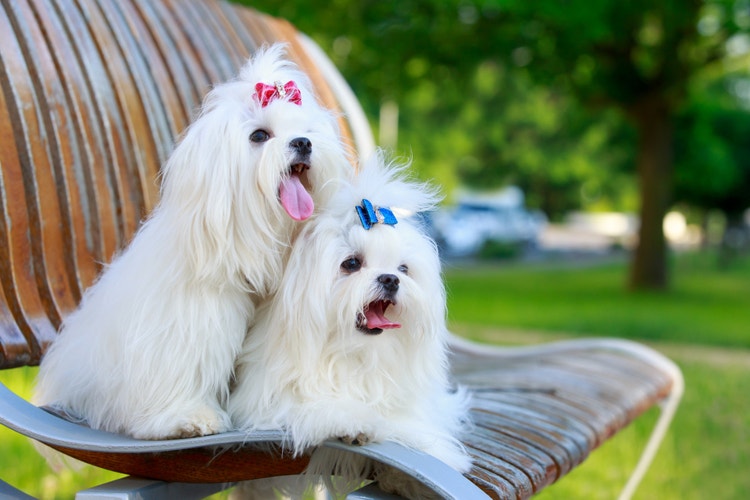
Maltese


Where Are Maltese Dogs From?
The Maltese breed has been a popular lapdog of nobles and royalty for many centuries. As their name suggests, they originated on the small island of Malta, south of Sicily. They are a member of the group known as bichons, which are dogs from the Mediterranean that share ancestry with Portuguese Water Dogs and Poodles. The small stature of the Maltese was ideal for ladies of nobility to carry them in their sleeves and pockets. Despite that small size, they are very hardy and adaptable dogs that enjoy agility and obedience competitions as much as providing companionship.
Caring for a Maltese
What Kind of Diet Does a Maltese Need?
What Kind of Diet Does a Maltese Need?
Maltese do best with any high-quality dog food. They can be picky eaters; trial and error may be necessary to find the right diet. Caloric intake is important to monitor so they do not become overweight, especially if treats are used for training. Discuss any dietary concerns with your veterinarian.
How Much Grooming Does a Maltese Need?
How Much Grooming Does a Maltese Need?
You’ll need to brush and detangle daily to keep your Maltese’s coat from matting, though shedding is not of great concern. Upkeep may be too much for some owners, who then choose to groom the coat to a more manageable length.
Are Maltese Healthy Dogs?
Are Maltese Healthy Dogs?
The Maltese is a fairly healthy breed, with an average lifespan of 12 to 15 years. They should be screened for cardiac, ocular, and liver disorders.
Maltese are predisposed to: portosystemic shunt, luxating patella, hypoglycemia, patent ductus arteriosis (PDA), chronic valvular disease (CVD), pyloric stenosis, hydrocephalus, distichiasis, glaucoma, progressive retinal atrophy (PRA), and white shaker syndrome.
How Much Training Does a Maltese Need?
How Much Training Does a Maltese Need?
Maltese are quite intelligent, though they can be stubborn! They require positive reinforcement training, and do not typically need more than basic classes. Despite their diminutive stature, they perform well in agility. Watching a Maltese perform in agility trials among much larger dogs is extremely entertaining.
How Much Exercise Does a Maltese Need?
How Much Exercise Does a Maltese Need?
Maltese dogs do not need more than a short walk daily to keep them healthy and happy. Even playtime in the house or yard will suffice, and they are quite adaptable. They thrive just being in the company of their families.
What Are the Physical Characteristics of a Maltese Dog?
Maltese Facts
Other Breeds to Explore
References
- Maltese Dog Breed Information and Personality Traits. Hill’s Pet Nutrition, Inc., 2020.
- American Kennel Club. The Complete Dog Book. Random House Digital, Inc., 2006.
- Morris, Desmond. Dogs: The Ultimate Dictionary of Over 1,000 Dog Breeds. Trafalgar Square, 2002.
- Wilcox, Bonnie and Chris Walkowicz. The Atlas of Dog Breeds of the World. T.F.H Publications, Inc., 1995.


